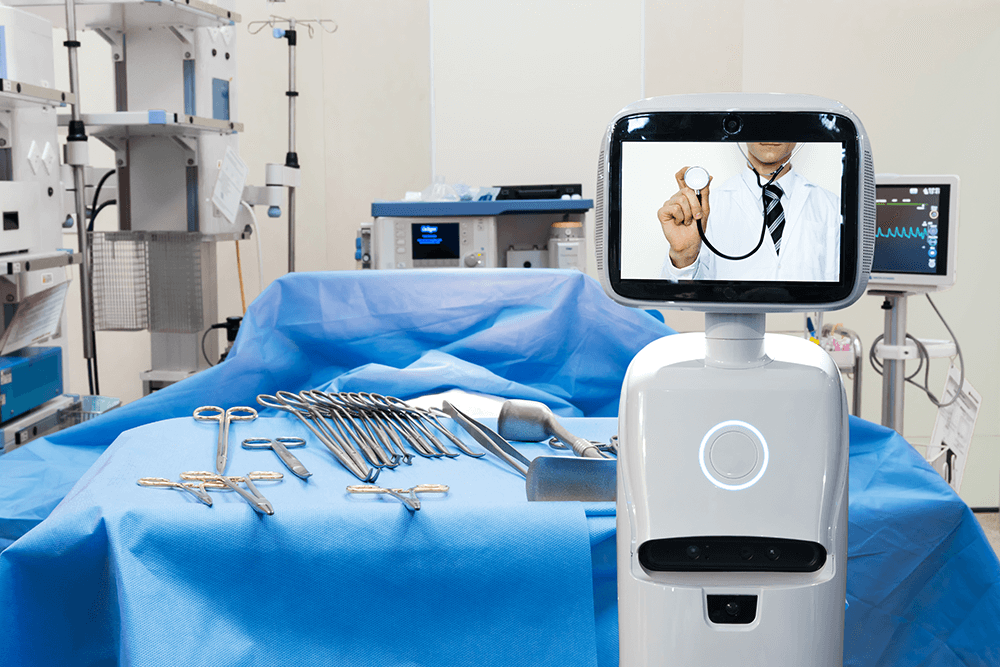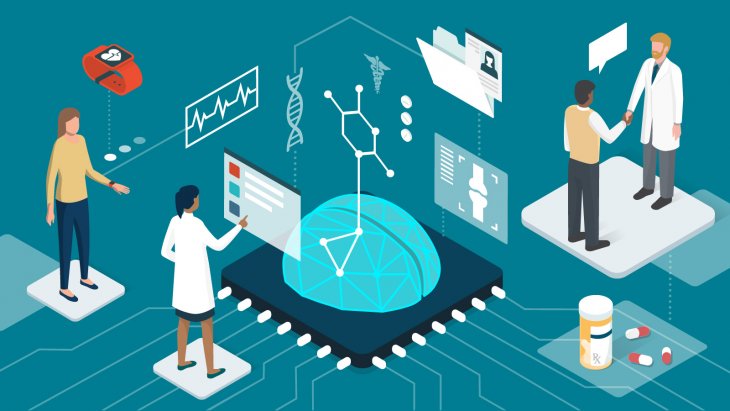Table of Contents
Market Revenue Matrix
Medical Devices in SaMD is experiencing rapid growth, driven by the increasing adoption of digital health solutions and the rising demand for personalized medicine. The following are key revenue statistics:
- Global Market Size: Artificial intelligence in the healthcare market is projected to grow from USD 6.9 billion in 2021 to USD 67.4 billion by 2027, it is expected to grow at a CAGR of 46.2% from 2021 to 2027
- Investment Trends: Investment in AI-driven healthcare startups has seen a significant increase, with over $10 billion invested globally in 2023 alone. The primary focus areas are diagnostic tools, personalized medicine, and telehealth solutions.
- Regional Insights: North America dominates the AI in the healthcare market, followed by Europe and Asia-Pacific. The growing demand for advanced healthcare infrastructure and supportive government initiatives are key drivers in these regions.
Introduction
In recent years, Artificial Intelligence (AI) and Machine Learning (ML) have made significant strides in various industries, and healthcare is no exception. One of the most promising applications of these technologies is in Software as a Medical Device (SaMD). AI and ML are enhancing the capabilities of medical devices, transforming patient care, improving diagnostic accuracy, and optimizing treatment plans. This blog delves into how AI and ML are being integrated into SaMD, their impact on healthcare, and the market outlook for this technology.

1. How are Machine Learning and Artificial Intelligence Used in Healthcare?
AI and ML have become integral parts of modern healthcare, providing solutions that improve efficiency and patient outcomes. Here are some key areas where these technologies are making a difference:
- Diagnostics and Imaging: AI algorithms analyze medical images (such as X-rays, MRIs, and CT scans) with a higher degree of accuracy and speed than traditional methods. For instance, AI-powered tools can detect early signs of diseases like cancer, often missed by human eyes, leading to earlier intervention and better patient outcomes.
- Predictive Analytics: AI systems analyze patient data to predict disease outbreaks, patient readmissions, and potential complications. This predictive capability helps healthcare providers take preemptive measures, thus reducing healthcare costs and improving patient care.
- Personalized Treatment: ML algorithms analyze vast amounts of data to provide personalized treatment plans based on individual patient histories, genetic information, and other relevant factors. This leads to more effective treatments and better patient outcomes.
- Remote Monitoring and Telehealth: AI-driven SaMD enables continuous monitoring of patients with chronic conditions. These systems alert healthcare professionals in real-time to any abnormalities, ensuring timely interventions.

2. What is the Use of Artificial Intelligence in Medical Devices?
AI enhances the functionality of medical devices, making them smarter, more responsive, and capable of handling complex tasks. Here’s how AI is being used in medical devices:
- Enhanced Diagnostics: AI-powered diagnostic tools integrated into medical devices can process and interpret complex data more accurately. This capability is critical in devices like wearable health monitors, which continuously track vital signs and detect anomalies.
- Automated Surgical Systems: AI algorithms guide robotic surgical systems, allowing for precision in complex surgeries. These systems can make real-time adjustments, enhancing safety and outcomes.
- Virtual Health Assistants: AI-powered devices can assist patients by providing information, reminding them to take medications, and even monitoring mental health symptoms. These virtual assistants are becoming an essential part of patient care.
- Drug Delivery Systems: AI is used in devices that automate and optimize drug delivery based on real-time patient data, ensuring the right dosage at the right time.
3. What is the Use of Software with Artificial Intelligence and Machine Learning?
AI and ML integration into SaMD provides several critical benefits:
- Data Analysis and Interpretation: AI-powered SaMD can analyze large datasets quickly and deliver insights that are crucial for clinical decision-making. These insights are used to diagnose conditions, predict patient outcomes, and recommend treatment options.
- Continuous Learning and Adaptation: ML algorithms in SaMD are designed to learn from new data continuously. This capability allows the software to improve its accuracy and efficiency over time, providing more reliable outcomes.
- Patient Engagement: AI-based software applications enhance patient engagement by offering personalized health recommendations, lifestyle advice, and reminders. This level of interaction improves patient adherence to treatment plans and overall health outcomes.
4. Use Case Studies
Case Study 1: AI in Radiology
A leading healthcare institution implemented an AI-powered diagnostic tool for analyzing mammograms. The AI system was able to detect breast cancer with a 99% accuracy rate, reducing the need for invasive biopsies and increasing the speed of diagnosis. This tool has now been integrated into regular screening programs, significantly improving early detection rates.
Case Study 2: ML in Chronic Disease Management
A wearable device company incorporated ML algorithms into its heart monitoring devices. These devices continuously track patients’ heart rates and rhythms, detecting irregularities that indicate potential health risks. Patients with these devices experienced a 30% reduction in emergency hospital visits due to timely alerts sent to healthcare providers.
Case Study 3: AI in Drug Development
Pharmaceutical companies have started using AI-driven software to analyze vast datasets from clinical trials and genomic research. One company used AI to identify a new drug candidate for treating a rare genetic disorder, reducing the drug development time by 50% compared to traditional methods.
5. Challenges and Future Prospects
While AI and ML offer numerous benefits, there are challenges to consider:
- Regulatory Hurdles: The integration of AI in medical devices requires strict regulatory approvals to ensure safety and efficacy. This process can be time-consuming and costly.
- Data Privacy and Security: The use of AI in healthcare involves handling sensitive patient data, raising concerns about data privacy and security. Ensuring robust cybersecurity measures is critical.
- Ethical Considerations: The deployment of AI in healthcare brings up ethical questions, including the potential for bias in AI algorithms and the need for human oversight.
Despite these challenges, the future of AI and ML in SaMD is promising. Advances in technology, coupled with increasing investment and supportive regulatory frameworks, will drive innovation in this field, making healthcare more accessible, efficient, and effective.
Conclusion
AI and ML are transforming Software as a Medical Device, offering unprecedented capabilities in diagnostics, treatment, and patient care. As technology continues to evolve, the integration of AI and ML in healthcare will become more sophisticated, opening new possibilities for personalized medicine and improving overall health outcomes. The journey towards AI-driven healthcare is not without its challenges, but the potential benefits far outweigh the risks, making it an exciting field to watch.
How are machine learning and artificial intelligence used in healthcare?
AI and ML are used in healthcare for diagnostics, predictive analytics, personalized treatment, and remote monitoring, enhancing patient care and outcomes.
What is the use of artificial intelligence in medical devices?
AI enhances diagnostic accuracy, automates surgeries, assists in patient care through virtual health assistants, and optimizes drug delivery systems.
What is the use of software with artificial intelligence and machine learning?
AI and ML software analyze data for better decision-making, provide continuous learning capabilities, and engage patients with personalized health advice.